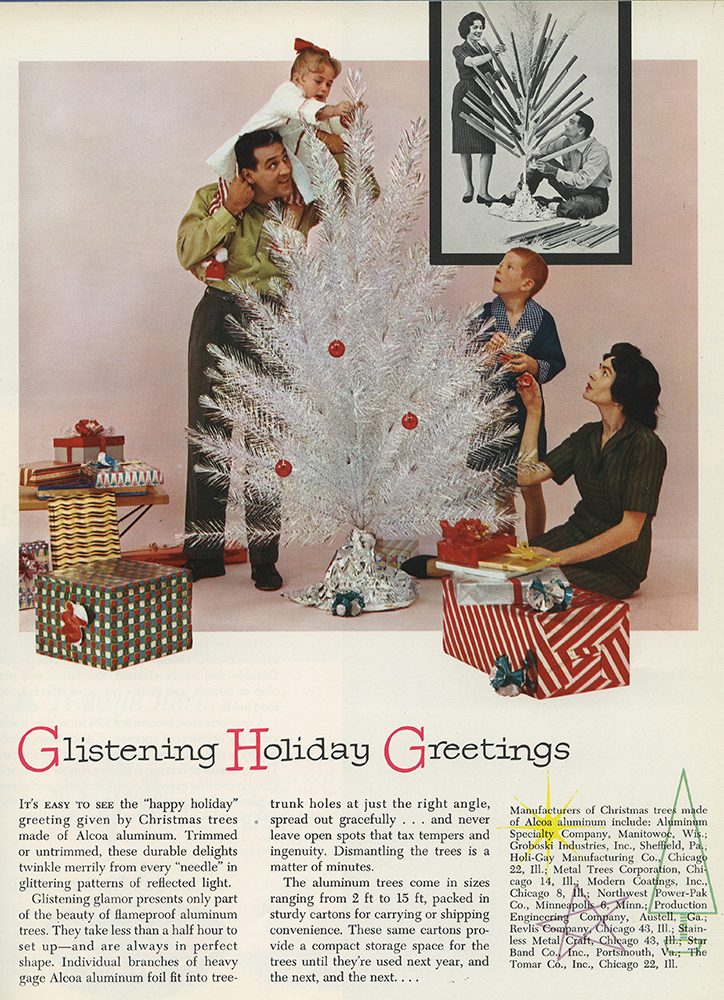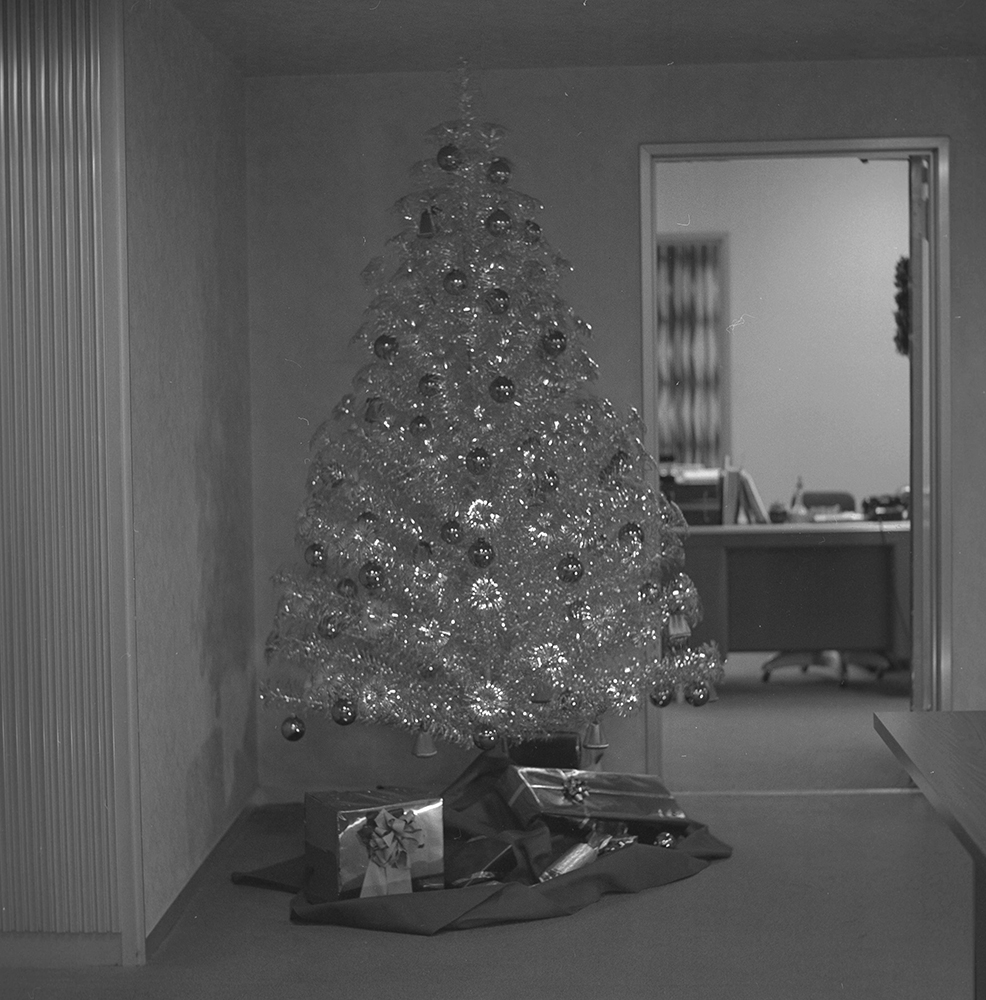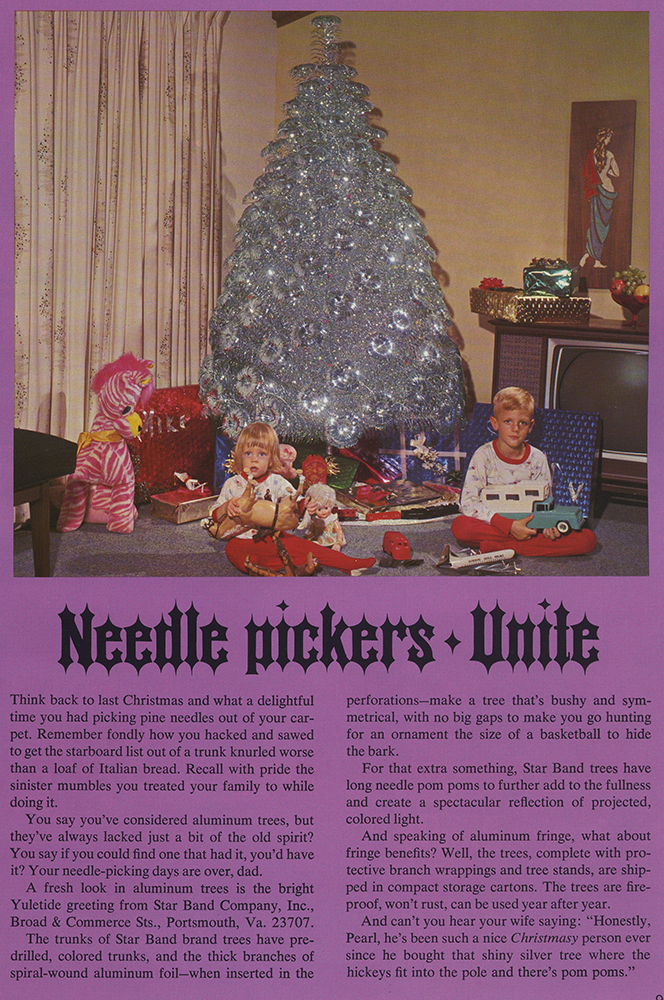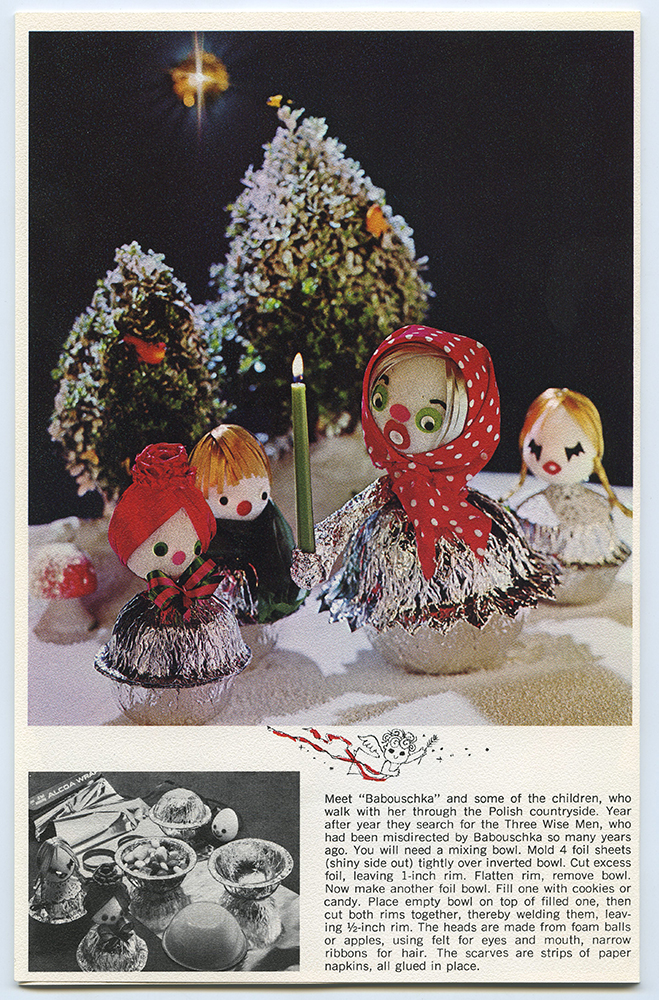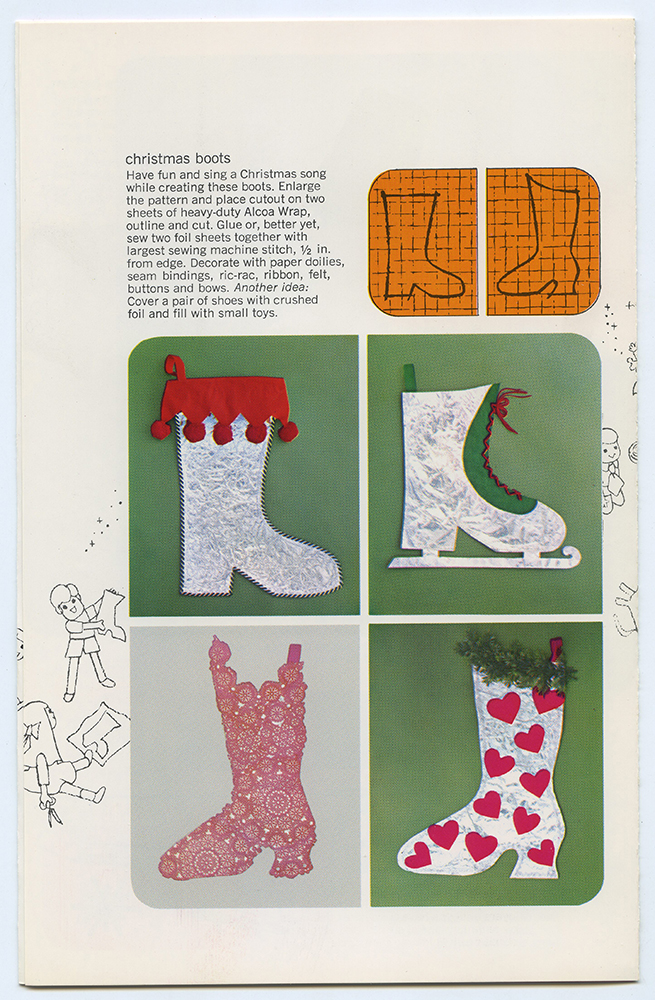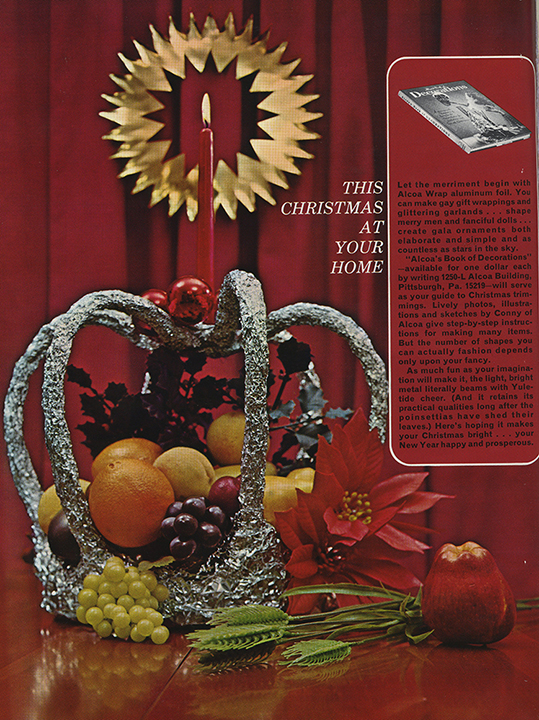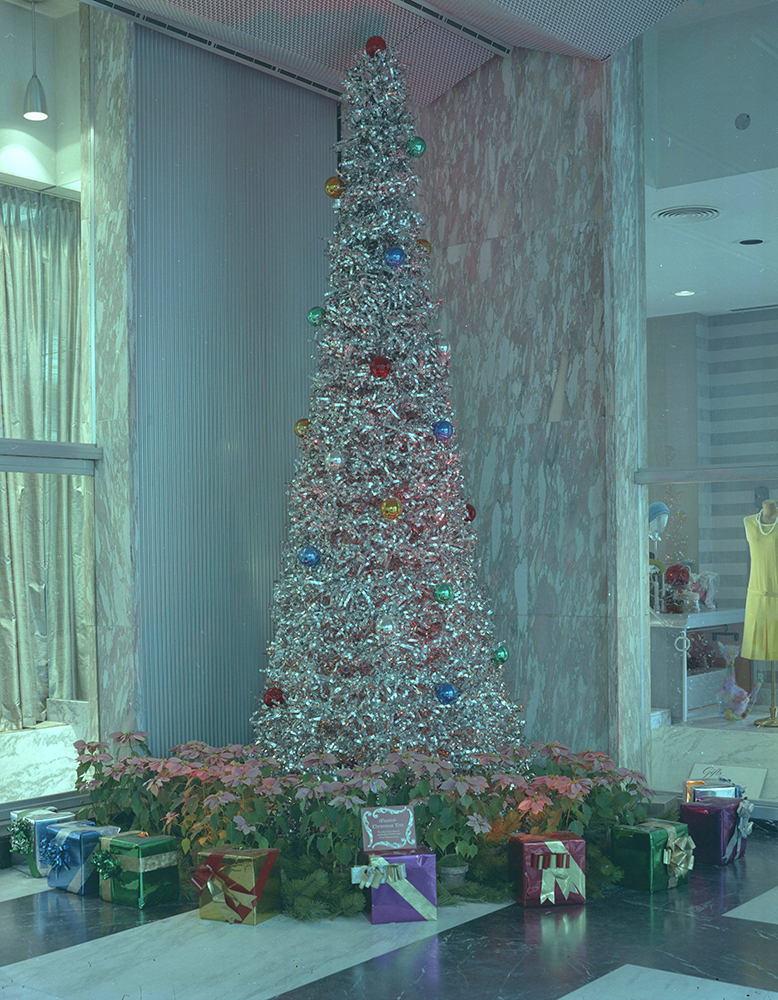
Emerging in the mid-1950s, aluminum Christmas trees were marketed as a solution to the problems posed by their pine-needled counterparts. They were easy to set up, reusable, fireproof, and did not shed on the living room floor.
The History Center’s Alcoa Records contain promotional literature that extols the benefits of using Christmas trees made of Alcoa aluminum. An article in the October 1960 issue of Alcoa Aluminum Newsletter, a publication issued by the company’s public relations department, describes these trees as “durable delights” that “twinkle from every ‘needle’ in glittering patterns of reflected light.” Aluminum trees feature “…branches of heavy gage Alcoa aluminum fit into tree-trunk holes at just the right angle, spread out gracefully…and never leave open spots that tax tempers and ingenuity.” Not surprisingly, aluminum trees were featured prominently in holiday displays in the Alcoa Building, to which images in the History Center’s Alcoa Photographs attest.
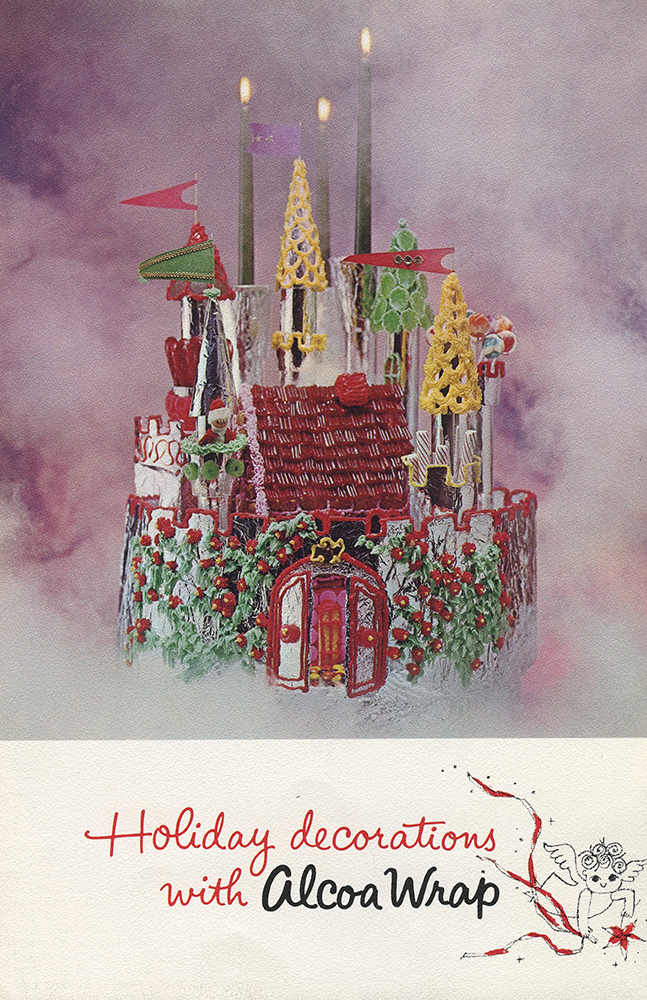
Alcoa did not stop at trees when imagining the possibilities of incorporating aluminum into Christmas displays. “Let the merriment begin with Alcoa Wrap aluminum foil,” begins an article in the December 1964 issue of the Alcoa Aluminum Newsletter. “You can make gift wrappings and glittering garlands…shape merry men and fanciful dolls…create gala ornaments both elaborate and simple and as countless as stars in the sky.”
Probably most famous for serving as a symbol of holiday commercialization in the popular “A Charlie Brown Christmas” TV special, aluminum Christmas trees began to decline in popularity in the mid-1960s. Though relegated to basements and garages for decades, aluminum trees have resurfaced as collector items on the second-hand market.
Matthew Strauss is the chief archivist at the Detre Library & Archives at the Heinz History Center.

